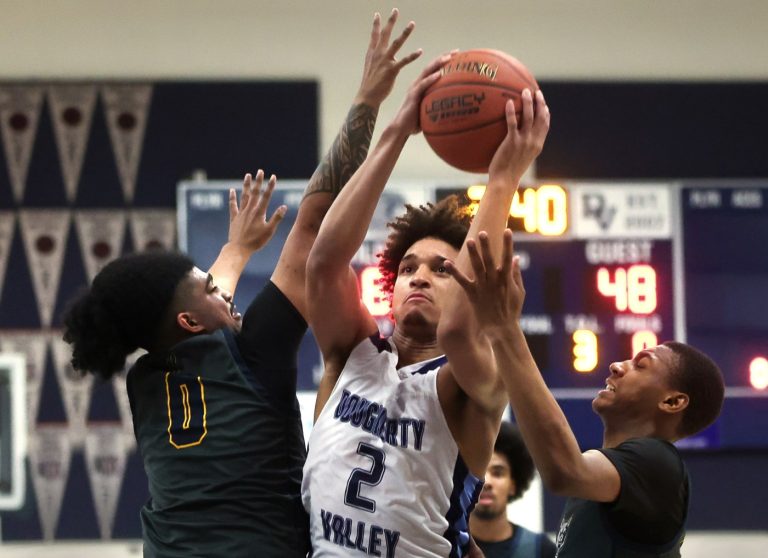Susanne Rust | (TNS) Los Angeles Times
When researchers talk about their biggest bird flu fears, one that typically comes up involves an animal — like a pig — becoming simultaneously infected with an avian and a human flu. This creature, now a viral mixing vessel, provides the medium for a superbug to develop — one that takes the killer genes from the bird flu and combines it with the human variety’s knack for easy infection.
So far, domestic poultry and dairy cows have proved to be imperfect vessels. So too have the more than 48 other mammal species that have become infected by eating infected birds and then died.
But researchers say there is one population of animal floating under the radar: Pets. The risk may be low, but the opportunities for transmission are abundant.
“I think companion animals definitely need to be in the picture,” said Jane Sykes, professor of medicine and epidemiology at UC Davis School of Veterinary Medicine, describing the viewpoint that diseases such as H5N1 should be viewed from a human, animal and ecosystem lens. None operates in isolation.
She pointed to our furry friends’ penchant for eating dead things, other animals’ poop and — in the case of cats — wild birds. Add to that our primate compulsion to touch, kiss and caress these animals that live in our homes (and sleep on some of our beds), and you’ve got a situation in which germs could be swapped and mingled.
Now consider the sheer number of companion animals and people in the U.S.
“Two-thirds of households have a dog or a cat,” said Jane Sykes, a professor of small animal medicine at the UC Davis veterinary school. “That’s a lot of companion animals. There’s actually more … in this country than there are people in Australia and the U.K. combined.”
She also pointed to new research showing H5N1 antibodies in a group of Washington state hunting dogs trained to retrieve waterfowl, a carrier of the disease.
Ian Redmond, a U.K.-based biologist and conservationist, agreed.
“It stands to reason that pathogen spillover [when a virus, bacterium or protozoon is transmitted from one species to another] is most likely when different species are in close contact,” he said.
“While traditional companion animals such as dogs, cats and horses have a long history of such close contact with humans, giving thousands of years for us to develop natural immunity to commonly shared pathogens, it is the new situations that carry most risk,” he said, including “raw pet food of uncertain origin.”
It’s an area that epidemiologists, food safety experts and veterinarians are warily watching — a situation akin to the dangers posed by drinking raw milk.
“There’s at least one animal a day that we see on our service that’s eaten some bizarre raw food diet,” Sykes said. “It did not use to be like that at all.”
Raw pet food typically consists of uncooked meat, bones, fruits and vegetables. The diets are often marketed as “natural” or similar to what animals would eat in the wild.
Calls and inquiries to several raw pet food companies including Jeffrey’s Natural Pet Foods in San Francisco, BJ’s Raw Pet Food in Lancaster, Pennsylvania, and Instinct Raw Pet Food in St. Louis went unanswered.
A query to Emma Kumbier, veterinary outreach coordinator at Primal Pet Foods in Fairfield, California, also went cold after The Times asked about the kinds of processes or procedures taking place to ensure that pets are not inadvertently exposed to bird flu via infected poultry or cattle.
Jay Van Rein, spokesman for the California Department of Food and Agriculture, said the state’s Meat, Poultry and Egg Safety Branch licenses and inspects businesses that produce raw meat — as well as those that import raw products for pet food manufacturing.
“Raw meat pet food legally sold in California comes from USDA- or CDFA-inspected facilities,” he said.
Inspections are focused on sanitation, proper product labeling, storage, control of inedible byproducts, pest control and record-keeping. He noted that “cooking meat has been shown to effectively kill bacteria of concern and also has now been shown to kill HPAI [bird flu], so if an owner wants to ensure their pet is not exposed to these pathogens, they should cook the meat.”
Janell Goodwin, a spokeswoman for the Food and Drug Administration, said “all animal food must be safe, wholesome and not misbranded.”
She cited the Preventive Controls for Animal Food requirements, which state that pet food manufacturers are responsible “for ensuring that raw materials and other ingredients” are received only from approved suppliers “whose raw materials are subject to verification activities.”
But with only limited testing of dairy cattle currently taking place, and uncertainty about the spread of the disease in the U.S. cattle industry, determining H5N1 status in cows destined for slaughter is murky at best, experts said.
Van Rein said that people can take measures to protect their pets — and themselves — by avoiding raw meat. But if they insist on purchasing it for their pets, state health officials said, these precautions can lessen the risk: Keep it frozen or refrigerated until ready to use; thaw under refrigeration or in a microwave just prior to use; keep raw meat and poultry products separate from other foods; wash working surfaces, utensils (including cutting boards and preparation and feeding bowls), hands and any other items that touch raw meat or poultry with hot, soapy water.
Finally, Van Rein said, refrigerate leftovers immediately or discard them.
Veterinarians “really don’t recommend feeding raw food diets to dogs and cats,” Sykes said. “It definitely increases the risk of certain infectious diseases like salmonella and listeriosis.”
She said people can reduce their pets’ exposure to avian flu and other pathogens by keeping cats indoors, keeping dogs on leashes, and possibly avoiding raw pet food.
She said veterinary societies and outreach organizations are urging vets to be on the lookout for signs of H5N1 infection, which could include listlessness, conjunctivitis, blindness, neurological symptoms and/or difficulty breathing.
She noted that during the SARS-CoV-2 pandemic, pets were also infected. In response, diagnostic labs added specific tests for COVID into their PCR panels, “and that was a good way to monitor for it in companion animals.”
She said similar diagnostic tests should be made for H5N1.
“I think the sooner we get those types of diagnostic tests, the better it will be in terms of preparedness,” she said.
©2024 Los Angeles Times. Visit at latimes.com. Distributed by Tribune Content Agency, LLC.












